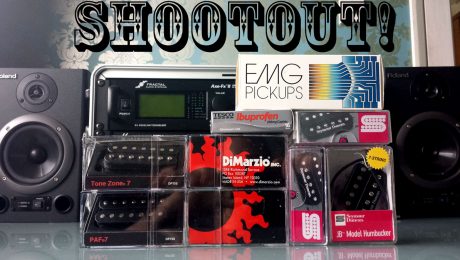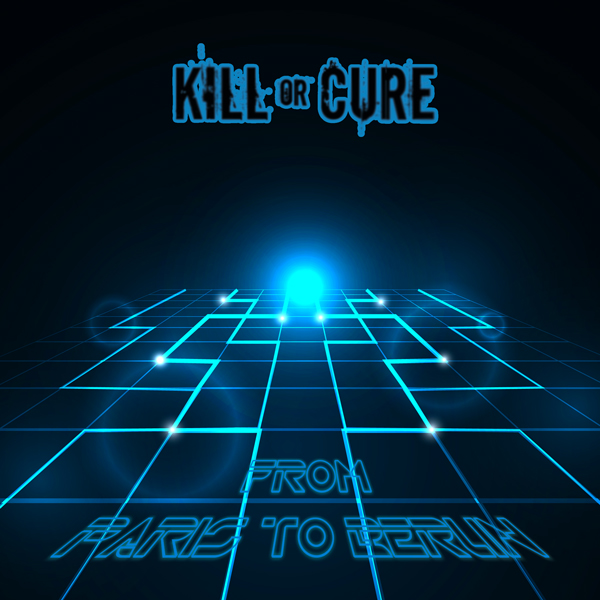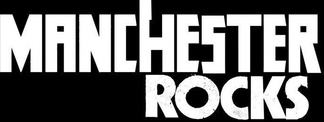7 String Pickup Test Comparison – My Analysis
Introduction
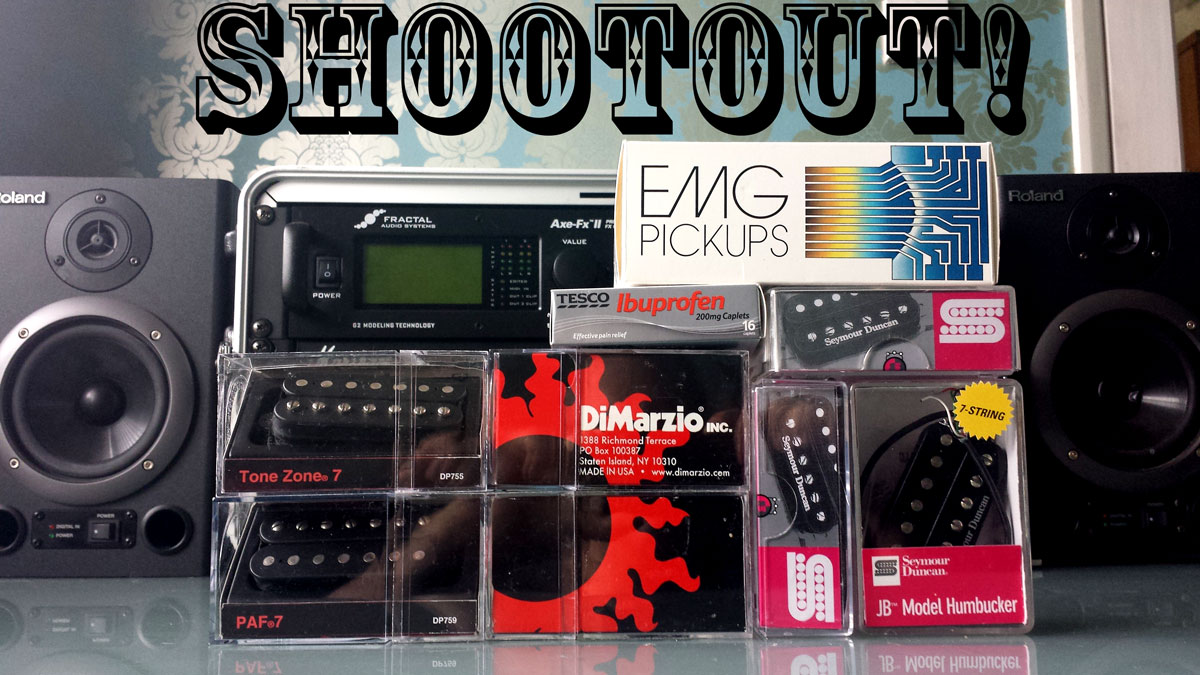
I’ve just completed testing 9 different pickups from Seymour Duncan, Dimarzio and EMG in either the same or very similar guitars. This blog is to share my thoughts on the results, because they weren’t what I was expecting…
Watch the videos here:
7 string clean bridge pickup comparison – EMG Dimarzio Seymour Duncan
7-string metal bridge pickup comparison – Dimarzio EMG Seymour Duncan – full mix
7-string metal bridge pickup comparison – Dimarzio EMG Seymour Duncan – no bass mix
Methodology
The methodology was to test them in a real world situation. Most of the work with my band Kill or Cure is currently studio-based, so for me it was natural to weight the test towards studio performance. I’d already recorded and released a track called Paradox. I’m pretty happy with the sound and the mix of that song. What I wanted to do with this pickup test was rerecord the guitar lines using the same Fractal Audio equipment, presets, mixing and mastering we used on the album and compare the results.
Background
I already had favourite pickups while recording the song last year, but since then I’d started preferring the ‘in the room’ sound from another pickup. So naturally I was expecting the new pickups to also improve on the original recording. When I listened back, that wasn’t the case. In fact, I slightly preferred the original stock pickup. More on that later, because that wasn’t the main surprise.
My results
The biggest surprise for me was how marginal the difference was between all the pickups in the final mixed metal recording. With my eyes shut, could I tell you which was which? Not from watching my own video back, no – not with any certainty anyway. And yet I could certainly distinguish most of the pickups from each other when playing them in the room. So does this mean this pickup test is flawed? No – because the final mix is the sound I was after. I didn’t want to change my presets purely to accentuate the differences.
However, if YOU want to do that, you can try for yourself with the supplied DI files. Reamp to your heart’s content and see what these pickups sound like through your setup.
Download the DI files here for metal riffing: https://dl.dropboxusercontent.com/u/1953576/Kill-or-Cure-Paradox-pickup-DI-files.zip
…and here for clean chordal work, where the recorded differences were more pronounced: https://dl.dropboxusercontent.com/u/1953576/7-string-bridge-pickup-clean-DI-files.zip
What this tells me is that the act of getting the tone to sit in the mix is making the pickups sounds more similar than just playing them in the room. So is it a universal rule that in any mix, all pickups will sound very similar? No. Let’s have a look at a couple of other pickup tests out there:
Other people’s pickup tests to check out
Firstly, this Keith Merrow one – despite the distorted tone, I can hear a lot of difference between the pickups and I have definite favourites. So Keith’s mix is bringing out more of the differences than the way we’ve chosen to mix. It’s a great gear demo and I encourage you to take a look: http://www.youtube.com/watch?v=mFO9phrDBig
Then there’s this test by Ola Englund: https://www.youtube.com/watch?v=U3YzI3sd2WA
Now the results here, even without other instruments getting in the way, sound very samey to me. But, again, that doesn’t make it a bad pickup demo. It shows me that a variety of equipment would get the job done to get the kind of sound Ola’s aiming for through his choice of amp or processor. But how does that help you? Well, Ola’s provided the DI files so you can reamp the raw sounds through your own equipment. (I tried this and found I could distinguish more easily through my own presets which pickups I preferred.)
What makes pickups sound similar?
So what does make pickups sound similar in my video, and in Ola’s?
1. The more gain and compression you apply, the less discernible differences in the output. (It’s certainly easier to hear differences in clean guitar tones – check out this test I did on clean tones: http://youtu.be/DvjEloEDt54)
2 – Once in the mix, those differences become even less – you have bass, drums, vocals all competing for frequencies, and it’s common to cut certain frequencies from the guitar to make room for those other instruments. If your various pickups sound distinct to you in the room but alike in the mix, the difference may well lie in the frequencies that the other instruments have taken.
3 – The quality of recording will affect how obvious the differences are. Youtube encoding and compression will take out some of the finer detail, as will converting to a low quality mp3, although I’ve done my best to upload at a high bitrate.
What makes pickups sound different?
Aside from the pickup construction itself and the proximity to the strings, it’s the guitar construction, materials and electrical components. I believe wood makes a difference (although this is a contested issue.) Whether or not you can hear it on the recording, I can tell you that my Crunch Lab pickup in Mahogany has a very different tone to in Basswood. I’ve tried to use one guitar for most of the pickup swaps, but I had a couple of similarly specced guitars already wired up with other pickups, so I’ve included them in the video as well, along with a note on the wood type and the weight. Electrics – what kind of volume pot have you got? Do you have a tone control in your setup? Do you have a treble bleed capacitor soldered into your setup? All these things between pickup and guitar lead can affect your final tone too.
In use
My favourite pickups vary depending on application – I’m not referring to whether it’s for a clean, a medium gain or an all out saturated distortion sound. I mean whether it’s for recording, playing live or practicing.
– Currently my favourite ‘in the room’ pickup is the Seymour Duncan Distortion. yet on my current presets it records a little bit trebley on demos I’m working on for our second album. But because I find its in the room sound very inspiring, i reach for that when I’m feeling creative and writing riffs.
– But for recording, my go-to seven string pickup is the stock Dimarzio New 7, designed specifically for a handful of Ibanez models like the RG7620 and the RG8527. It sits in the mix right where I want it. It’s tight, balanced and responsive, even though it’s not quite as much fun in the room.
There’s pickups in this test I didn’t particularly enjoy playing but sound awesome in the mix:
3 spring to mind:
– the PAF7 – it’s got a little less gain than some of the other pickups in the test. And for this type of song where i want a thick, consistent tone, my feeling while recording was maybe it needed a lttle more oomph. However, when I listen back, it sounds very full. Just as powerful as some of the others, but also clearer. That might be down to multitracking 4 guitars compensating for its lower gain, or it might be a result of the mix.
– JB7 – in the room I found the bass overpowering. But when I listen back in the mix, it’s nice and clear and dry, and sonically distinct from some of the other pickups.
– Crunch Lab 7 – I am a huge fan of the Crunch Lab 6 string I have in an alder guitar. But I wasn’t loving this 7 string version in the darker mahogany body. However, listening back, it’s pretty much in the ballpark of what I’m after. Fixed in the mix?
Stock pickups vs branded pickups
That brings me onto stock pickups vs big brand pickups Stock pickups get a lot of hate, some of it undeservedly so. Why is this? In some cases it’s because they’re made from cheaper materials or by less experienced manufacturers. But this is not always true. Take the ‘New 7’ found in many standard Ibanez models of the 2000s. This is a through and through bona-fide Dimarzio – it’s got their name on the back, it’s made in the same factory as the other Dimarzios – yet it gets a bad rep on the forums. Is this down to the tone or down to lack of obvious branding? It’s seen as an Ibanez stock pickup. Personally I love them. And think on this – stock pickups are chosen by the guitar product managers to complement that model and work with the woods and setup (as well as hit the right price point ). The picker might not have the same taste as you but it’s a good starting point to ensure a good match. I’m also a fan of the Ibanez F2 pickup that came on the 1990s S series guitars, because it’s the right pickup matched with the right guitar.
The importance of feel
An element you can’t capture in a video is response to touch. How sensitive and dynamic are the pickups? Do they respond to subtle changes in your playing style? You might not hear the difference in the final recording but if it makes you play better by feeling more connected with your tone, a pickup change can be worth it. Even if I decide not to record with a Seymour Duncan Distortion, the number of riffs it has given me from the sheer joy of playing it is priceless.
Your turn…
Have you ever downloaded someone else’s presets for some of your gear, whether you’ve got an effects unit, or a Line 6 Pod or some other digital modeler – and when you try the preset with your gear, it sounds terrible? That’s why I’ve made the DI files available – so you don’t have to live with my choice of sound. You can try reamping them through your own gear using settings you’re familiar with. You might also have settings that bring out the characteristic differences between pickups more than my preferred setup.
Download the metal riff DI files here: https://dl.dropboxusercontent.com/u/1953576/Kill-or-Cure-Paradox-pickup-DI-files.zip
Download the track ‘Paradox’ here: http://killorcure.bandcamp.com/track/paradox
Conclusion
If I was listening back in a blind test to my video, could I tell the difference in the mix? Probably not between all of them. I could probably distinguish between actives and passives. I might pick out the JB as it has a certain nasal tone on the low B. But maybe not the others. Does that bother me? Not much. It’s reassuring to know that out of all the pickups I tested, I’d be happy recording with any of these and I’d still be able to capture ‘my sound’. And at the end of the day that’s what we’re all aiming for. Will I ever swap pickups again? Undoubtedly, even if – in my distorted setup – the major difference is in the room rather than in my recorded sound.
- Published in Gear, Recording, Uncategorized
Kill or Cure release self-titled debut album to critical acclaim
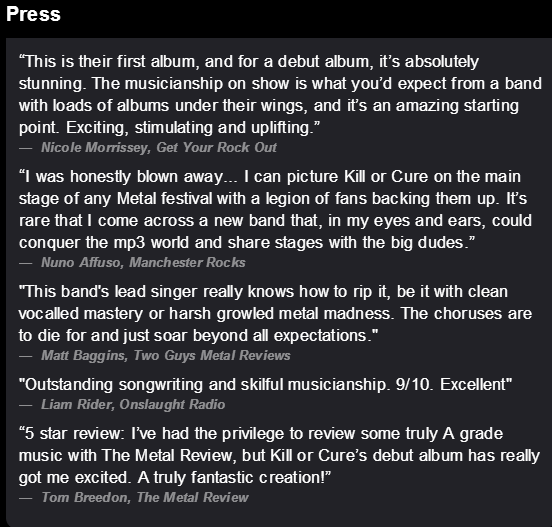
Great reviews from the critics
Press release: January 7th 2014
Kill or Cure release their debut album on January 7th. Full of crushing metal anthems, it’s a rare mix of groove, aggression and melody, combining powerhouse vocals, technical excellence and razor sharp hooks.
Feedback from the press has been extremely positive with rave reviews across the board, and one reviewer later proclaiming on Twitter that it’s the ‘best debut album I’ve ever heard’. Read all the reviews here: http://killorcure.co.uk/press-reviews/
Dan Hepner, guitarist, elaborates: “Kill or Cure are three good friends who do this for a shared love of metal. We’re based at opposite ends of the UK, so to make this happen we spend our vacation time together in the studio, writing and recording the best metal we can cook up. There’s no record company telling us what to do, so we make the metal we want to hear, and trust our own creative instincts. Now is the right time to unleash Kill or Cure on the outside world and see who shares our vision.”
Kill or Cure are currently back recording and have already started work on their follow up album. Dan explains, “Finishing off in the studio is our main priority while we’re all fired up – this way we can deliver a one-two punch within a year – but we’re also keen to recruit some extra hands so we can gig these songs around the UK.”
Listen to Kill or Cure album tracks here: www.killorcure.co.uk/music
Find the Kill or Cure album on itunes, Amazon and all other good digital outlets.
Contact Dan Hepner for press enquiries, interview requests and review copies.
Email: info@killorcure.co.uk
Web: killorcure.co.uk
About Kill or Cure
Kill or Cure’s sound is a unique and gripping take on modern metal. The music is a rare mix of groove, aggression and melody, combining technical excellence and musical flair with modern razor sharp hooks. The trio of band members are based in Manchester and Southend. Due to the geographical divide, Kill or Cure are concentrating on studio work and are currently recording their second album. A live lineup will be recruited for 2014.
- Chris Brookes – Vocals. Chris can sing, write, plays many instruments, and produces. They say those that can do, and those that can’t teach. Well Chris does that too. He’s the swiss army knife of the band.
- Dan Hepner – Guitar. Dan grew up playing 70s rock, 80s thrash, 90s grunge and modern downtuned metal – but it could still just be a phase he’s going through.
- Elena DeJesus – Bass. Len was pressganged into playing bass but started life as a classically trained violinist, sharing the stage with Robert Plant and Pavarotti – although never both at the same time.
- Published in Album, Kill or Cure, Recording
The great Kill or Cure album reviews keep on coming
Manchester Rocks are blown away
http://manchesterrocks.webs.com/apps/blog/show/39480351-review-kill-or-cure-kill-or-cure
 “I was honestly blown away…It’s rare that I come across a new band that, in my eyes and ears, could conquer the mp3 world and share stages with the big dudes.”
“I was honestly blown away…It’s rare that I come across a new band that, in my eyes and ears, could conquer the mp3 world and share stages with the big dudes.”
There’s also a threat of metal twerking in there – great colourful review!
Get Your Rock Out are stunned!
http://getyourrockout.co.uk/wp/album-reviews/album-reviews/kill-or-cure-kill-or-cure/
“This is their first album, and for a debut album, it’s absolutely stunning. The musicianship on show is what you’d expect from a band with loads of albums under their wings, and it’s an amazing starting point. Exciting, stimulating and uplifting.”
- Published in Album, Kill or Cure, Recording
Two more great reviews for the Kill or Cure album!
Onslaught Radio say our album contains “outstanding songwriting and skilful musicianship” Overall verdict? 9/10 – Excellent. Read it below…
http://www.onslaughtradio.com/unsigned/unsigned-reviews/kill-cure-kill-cure/5032/
Two Guys Metal Reviews: “This band’s lead singer really knows how to rip it, be it with clean vocalled mastery or harsh growled metal madness. The choruses are to die for and just soar beyond all expectations. I see Kill or Cure really exploding in the next few years.”
http://www.twoguysmetalreviews.com/2013/12/kill-or-cure.html
- Published in Album, Kill or Cure, Music, Recording
The first album review is in… FIVE STARS!
It’s full marks for our debut album! Very proud to find out our first official album review is overflowing with great comments about every track. Read what The Metal Review’s Tom Breedon has to say here…
http://themetalreview.com/albums/kill-or-cure/
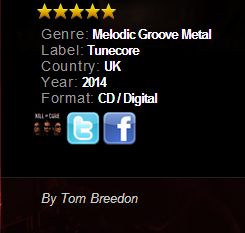
- Published in Album, Kill or Cure, Music, Recording, Studio, Uncategorized
Banging the drum for technology
Drums on demand
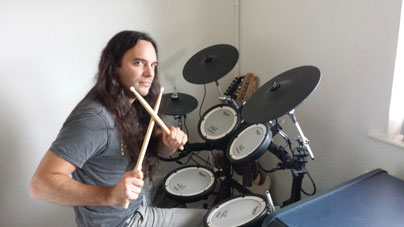 In the last blog I looked at how technology is creeping into the world of the drummer. This time we’re going to delve a bit deeper into the advantages of drum technology for drummers and non-drummers alike.
In the last blog I looked at how technology is creeping into the world of the drummer. This time we’re going to delve a bit deeper into the advantages of drum technology for drummers and non-drummers alike.
Drummers benefit
Think of the space an acoustic kit takes up. For most people it’s not practical to keep a drum set in the house. Unless you have a spare bedroom or an unused garage, you’re out of luck. If you want to learnt play you have to rent a rehearsal space to keep the kit in, or wait to play between lessons. Electric kits such as those by Yamaha or Roland take up a lot less space and can fit in the corner of a room without taking it over. Plus with the lower volume and headphones options, they’re a lot less likely to have your neighbours issuing cease and desist notices against you while you nail that double kick and cymbal crash pattern – much more conducive to home practice.
As a long-time guitarist , I recently found myself wanting to learn the drum basics to help my songwriting – so I shoved an electric kit in the corner of the smallest bedroom and hey presto – all set to rock, minus the talent and the timing – and even they can be touched up if I record direct into Pro Tools and fix up my mistakes in what I played.
Producers benefit
In the studio, drums are one of the most difficult instruments to record. Not only do they require a large room to set up in with conducive acoustics, they need a multitude of microphones placed on individual drums and around the kit to pick up individual sounds and room ambience – expensive and time consuming. And then there’s the mixing required to get a good kit sound – it’s an art in itself. After recording and checking the mix, it’s likely you’ll want to use the original sounds to trigger some replacement samples, especially in the case of the kick drums and snare to get things sounds crisp and meaty enough. And while the vocalists and guitarists have it easy recording overdubs to iron out those little errors, often the producer will insist the drummer nails it in one take as drum overdubs are notoriously tricky to get sounding like a natural fit. Recording drums is either a nightmare or an art – there’s no question that drum programs like EZ Drummer and Superior Drummer 2 make it far easy to approximate the sound and mix you are looking for and save a lot of time in the process. What’s more, the work can be done anytime, anywhere, on any reasonably specced laptop, reducing studio time and costs.
Home recording musicians benefit
The ability to leave behind the professional drum recording room and work from a fairly modest home or portable setup opens up the doors for talented musicians to get their music out to the masses on an affordable budget. Take the first Kill or Cure album – most if it was done without a drummer or a studio. Just three band members 250 miles apart recording guitars and bass direct into Pro Tools. The drums are programmed in. Only the vocals needed to be recorded outside the confines of our homes. How did it turn out? Well you can here a clip below – you be the judge:
Man vs machine: drums, samplers & sequencers
The rise of the drum machines
One day the machines will rebel and take the place of their masters. They will look like you, sound like, you, and feel like you. But they’ll be better than you. What the plotlines of Terminator, Battlestar Galactica and countless other sci-fi didn’t predict was they’d start by replacing the drummers.
Now please, let’s take this seriously – no jokes that they’re replicating the simplest lifeforms first . Drumming is harder than it looks. I‘ve tried patting my head and stroking my stomach at the same time and I can tell you it’s not that easy, especially when the other train passengers are looking at you funny.
Man or machine?
If you’re discovering the latest greatest underground metal phenomenon on Youtube, and they’re on a tight budget, there’s every chance that’s a machine bashing out the beat. Drum machines have come a long way since the tinny timbres that assaulted our ears in the 80’s, though. With great software products like Toontrack EZDrummer and Superior Drummer 2, and realistic electric kits by Yamaha and Roland, we’ve moved from something as lifelike as a blow-up doll to something more like a living, breathing cinema date. Nowadays the best way to tell if you’re listening to a drum machine is if the beat sounds too perfect or could only be played by an octopus.
We can rebuild you…
Even when the band does have a drummer in their ranks, for album recordings each original drum hit has usually been replaced or enhanced with a triggered digital sample. Of course this is all in the name of progress – a snare that begins life sounding like a monkey* banging on a biscuit tin can be transformed into the unwavering rhythmic crack of an assault rifle. *No offense to the Cadbury’s gorilla, that’s one polyrhythmic primate I don’t want to cross.
More power to your elbow?
All this sonic sleight of hand can also work against you though. Drum lines have become busier than ever before. Today’s metal drummers can beat their kits into submission with relentless double kicks, blast beats, and complicated fills. The trouble is all the other instruments have got busier and more demanding too, and all the instruments are fighting to plant their flag in the same patch of dirt. With the modern metal soundscape getting denser and denser, there’s a tendency for the drums to get painted into a smaller corner. Check out the huge drum sounds of any 70s hard rock, from Led Zep to Black Sabbath – they may not be the crispest, but they come across as massive, deep and powerful. You can feel the air move. Too often in modern metal that double bass is reduced to sounding like you’re drumming your fingers on a tabletop.
The paradox of perfection
Mixing a song is a tricky balancing act – it only takes one pair of exhausted eardrums for a mix to be unbalanced, and suddenly it’s hello guitars, goodbye beat. Let’s say the mix is a good one though – all that sampling and replacing can make an album sound very ‘cookie cutter’. By our nature, we humans (forgive my assumption if you’re not) don’t appreciate perfection. Have you ever tried putting a mirror down the middle of your passport photo? When the left side matches the other in absolute symmetry, your brain tells you it’s just not right. (Quite literally in this case.) Because we like variation. We like discrepancy. We like individuality. We screen out the dull. We screen out the repetitive. We’re screening out this paragraph, aren’t we?
So use the technology wisely. It can be an invaluable tool, but like cosmetic surgery, take it too far and you risk losing all that was arresting and original in the first place. If you’re programming your own beats, spend some time working some organic feeling into the track. And if your drummer is sloppier than as hell, it won’t hurt to tighten them up with a touch of technology… but don’t let it take over completely. I’m sure Sarah Connor and Colonel Adama would both agree.
How Kill or Cure use drum programming
In Kill or Cure we’re certainly not averse to using the technology. In fact, you can hear programmed drums all over the debut album. But we spent the time working in the dynamics and making sure the drum patterns were natural. Check out the clip of ‘Paradox’ below to hear them in action.
In my next blog I’ll be taking a closer look at the benefits of drum technology. In the meantime, you may want to check out an example of drum programming in action – this is …, a release off our new album ….
Writer: Dan Hepner
How to release cover songs: the law, licensing & cost
Learn how to get your cover songs:
- distributed via the major digital download stores e.g. Amazon, itunes
- streaming online through services such as Spotify
- streaming off your own website or social media page
- played on commercial and internet radio
- played live in music venues
- put on YouTube without a copyright infringement notice on your account
- distributed via Bandcamp
First of all let me state that I am not a lawyer and do not intend this information to be used as legal advice. I am a musician who, after trawling the web, found it next to impossible to find out how to legally release a cover version, what costs are involved, and how to obtain permission and licenses. This is the situation as I have understood it. I hope it saves you a few hours of research. If you would like to return the favour, please visit Kill or Cure’s Facebook page and share and like if you deem it worthy.
The results:
By following my own advice below, my band Kill or Cure were able to release our cover of Infernal’s From Paris To Berlin, which you can see here:
First steps – find the composer and publisher
To license a cover version, first find out the composers and publishers of your cover tune. You can use the MCPS PRS database to look this up, or the Harry Fox Agency’s Songfile. This information will be required on some forms to get the correct licensing, and on materials you send to radio.
Video & Youtube
There are two options here – many people simply upload their cover tunes to Youtube and hope for the best, but be warned, this is an infringement of copyright. To combat this, Youtube has technology that is able to identify that the music you have uploaded may be an infringement on someone else’s original composition. If you acknowledge the third party claim, one of two things will happen: The copyright holder can choose to let the cover version stand and run adverts against your video, and thus profit from it; or they may request it is taken down. This will put a copyright infringement black mark against your account – a few of those, and you will lose your account, so it’s a calculated risk. The problem with this method, if you care about your account is you don’t know how the publisher will react until you have uploaded your cover. There is a safer alternative – ask the song publisher directly for a video sync licence. The cost will be agreed between you – there is no set price for a sync license.
Streaming Services e.g. Spotify
Streaming services have their own license agreements to stream cover songs, including yours. Therefore if you get yourself played on these services, any payments you receive via your intermediary (e.g. Tunecore or similar) will already have had any monies owed to the publisher/composer deducted.
Commercial radio stations
Like streaming services, radio stations have their own agreements within their licenses to play cover songs. As a band, there is nothing further you need to do, other than make sure the info provided in your CD or MP3 accredits the original composers correctly.
Playing live:
If you are playing in a bar that is licensed to play live music, your cover tunes are covered by their license – no further action is required by the band.
Digital downloads for sale in U.S stores
(via a distributor like Tunecore or CDBaby.) It is your responsibility to pay the royalties to the publisher. However you can use a service like Limelight to do this for you if you buy your licensing through them. See below for further details.
Digital downloads for sale in territories outside the U.S
The situation is different outside the US, You can use a distributor like Tunecore or CDBaby to distribute your downloads to non-US stores such as iTunes in the UK, or Amazon UK – royalties are collected from the store automatically by local performing rights societies e.g. PRS in the UK. Your band never see that portion of the revenue, and neither does your distributor – the digital download provider e.g. Amazon UK pay any royalties owed directly to the local performing rights society, who pay the publisher. Any money you receive for download sales via the distributor has already had the royalties deducted.
Licensing physical CDs, digital downloads, ring tones, and streaming off your own website:
If you are based in the US…
While there are ways to get the correct licensing yourself, perhaps the easiest way to this is through Limelight’s song clearance service. Pay Limelight in advance for the number of copies that you estimate you will sell. At the time of press, Limelight’s costs are an initial $15 per type of sale (whether CD, download, stream, or ringtone), plus a cost per item that you are paying to cover. If you are close to selling more than the initial amount purchased, you can order more at the same cost per item and a further $7.50 per batch (some volume discounts are available)
Advance royalty costs on top of the service fee are as follows:
- Per stream off your music player: $0.01
- Per download or CD sale if song is under 5 mins: $0.091
- Per download or CD sale if song is 5 minutes in length or longer: $0.0175 per minute or fraction thereof per unit.
Are you based in the UK?
If so, the situation is slightly more complicated. Limelight can still be used to cover your music player streams, digital downloads from US stores and ringtones. However, if you are getting CDs manufactured in the UK, you will need to buy licenses from the local licensors, in this case MCPS/PRS. (if you get them manufactured in the US, I assume you could still use Limelight.)
Are your CDs for promo use only?
i.e. will you be giving them away free to reviewers, broadcasters etc? If so, apply for an AP4 license, at a cost of £0.005p per copy manufactured
Are your CDs for retail sale?
If so apply for the AP2 licence. Costs are 8.5% of Published Dealer Price (PDP), or if unavailable, 6.5% of Retail Price (RP) multiplied by the number of copies manufactured. The AP2 also allows you to create royalty free 25% of the first manufacture for use as promo copies. If this is enough for you, it will negate the need for a separate AP4.
Can I sell my cover on Bandcamp.com?
Bandcamp discourage covers being sold on their site. However, it is possible, if you jump through some legal hoops. On their site they state “You must own or control all rights to everything you upload. That means covers are out, unless you have a written license or authorization from the artist to upload the cover to Bandcamp and grant us the rights in the terms below. Do not upload cover songs unless you have obtained all permissions and authorizations in writing! These requirements apply regardless of whether you’re selling the music or giving it away.” The terms of use which the publisher must agree to are here: http://bandcamp.com/terms_of_use#upload ”
and finally…
I want to give the cover song away for free – do I have to pay for that too?
Yes, whether you are using Youtube, or distributing your own free mp3s or CDs, you will still need to apply the same licensing rules above.
Summary of cover required:
For each cover tune, a UK or US musician will need any or all of the following:
- a Limelight license to cover US digital downloads, ringtone and music player streams
- if US: a physical CD licence from Limelight to cover copies shipped
- if UK: an AP2 license from MCPS/PRS to sell CDs (or an AP4 license if they are for promo only)
- a sync license from the publisher to synchronise that song to video from Youtube
- a signed written agreement from the publisher in order to sell covers on Bandcamp.
You should be covered without additional licensing in the following situations:
- playing covers in live music venues (covered by the venue)
- commercial radio (covered by the station)
- streaming sites such as Spotify (covered by the site)
- digital download stores outside the US (covered by the download store), although I profess not to know every country’s arrangements for collecting royalty payments
Once again, this is the fruits of my web research and I do not warrant it to be 100% correct– I hope you find it useful, but if you want expert legal advice I would recommend a legal expert, strangely enough!
Writer: Dan Hepner – Follow Dan on Twitter
- Published in Music business, Recording
- 1
- 2


 To celebrate the festive season, we’ve taken
To celebrate the festive season, we’ve taken 